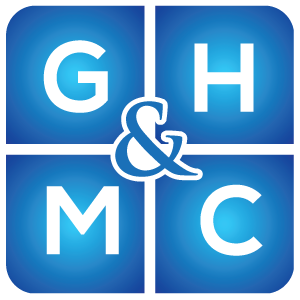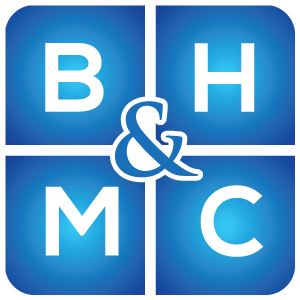
If you spend long hours sitting at a computer screen or scrolling on your phone, you might notice a dull ache that starts in your neck and creeps up into your head. So, can bad posture cause headaches?
The short answer is yes. Poor posture, especially forward head posture with rounded shoulders, loads the neck muscles, joints and cervical vertebrae, and can irritate nearby nerves. Over time, this stress can lead to posture-related headaches such as tension headaches (tension-type headaches), cervicogenic headaches, or even aggravations of migraines.
This guide explains how posture causes headaches, what symptoms to look for, practical ways of improving posture, and how our clinicians approach the root cause using gentle manual therapy. The aim is fewer headaches, less neck pain, and more confidence in maintaining good posture throughout the day.
How Poor Posture Triggers Headaches
Forward head posture and increased load on the neck
When the head sits forward of the shoulders, the centre of gravity shifts. The farther the head is positioned forward, the more your muscles must work to hold it up. This is why hours of sitting with the chin poked out toward a computer monitor can create stiffness, muscle tension and muscle imbalances. The deeper neck and shoulders start to tire while smaller postural muscles switch off. Over time, these postural issues can irritate sensitive structures in the upper neck and contribute to headaches caused by posture.
Cervical spine, brainstem and the nervous system
Your top three cervical vertebrae house pathways that communicate with the brainstem and wider nervous system. If these joints become irritated, they can sensitise central pathways that refer head pain into the temples, forehead, or behind the eyes. This is one way poor posture causes a headache without any problem inside the head itself. Tight tissues can also increase local pressure or contribute to pinched nerves or a pinched nerve sensation down into the shoulder or arm.
Typical postural habits that drive symptoms
Modern routines make it easy to fall into postural habits that keep the head jutting forward for long periods:
- Hunching toward a low computer screen or laptop
- Cradling the phone between the ear and shoulder
- Carrying a heavy bag on one shoulder
- Spending long hours with text neck on a phone or tablet
- Working at a desk without breaks, leading to prolonged sitting and stiffness in the upper back
These patterns create postural imbalances and incorrect posture, which keep the neck under load and the brainstem on alert.
What Do Posture-Related Headaches Feel Like?
Everyone experiences posture-related headaches a little differently, but there are common patterns:
- A dull ache that begins in the neck or upper back and then spreads to the head
- Tight, band-like tension around the scalp or behind the eyes
- Stiff neck and shoulders after long hours at a desk
- Flare-ups with prolonged sitting and relief after correcting posture or moving
- Occasional tingling or aching into the shoulder or arm, suggesting irritated tissues or pinched nerves
If you notice frequent headaches that line up with busy workdays or device time, posture is a likely contributor.
Which Headache Types Are Commonly Linked With Posture?
Tension-type headaches
These are the classic posture-related headaches. They present as a tightening or pressing sensation on both sides of the head, often after long hours in front of a computer monitor. They are driven by muscle tension and irritation in structures of the neck and upper back. Improving workstation set-up and strengthening muscles that support the neck usually helps.
Learn more about tension-type headaches
Cervicogenic headache
This headache starts in the neck and is referred upward from irritated joints or tissues in the upper cervical spine. It often worsens with incorrect posture, quick turns of the head, or sustained positions. Addressing joint sensitivity and postural control can lead to reducing pain and experiencing fewer headaches.
Learn more about cervicogenic headaches
Occipital neuralgia and migraine aggravation
Sustained loading can aggravate the occipital region at the base of the skull, sometimes lighting up the greater and lesser occipital nerves. This may produce sharp, electric pains at the back of the head. Posture can also be a trigger for migraines in susceptible people, especially when combined with stress and disrupted sleep.
Learn more about occipital neuralgia
Quick Self‑Checks You Can Try
Use these simple cues to nudge your posture toward a neutral position and reduce tension.
- Screen level: Raise your computer screen so the top third is at eye level. If you use a laptop, add a stand and an external keyboard. This reduces the urge to push the head forward.
- Elbows and shoulders: Keep elbows near your sides and shoulders relaxed, not scrunched. If the desk is high, raise the chair and support the feet.
- Chin retraction: Imagine making a gentle double chin. Gently pull the chin straight back so the ears stack over the shoulders. This promotes a neutral position without forcing the neck.
- Micro‑breaks: Every 30 to 45 minutes, stand up, roll your shoulders and change your position. Short breaks prevent stiffness from long periods of sitting.
- Breathing: Slow belly breathing can reduce background tension in the neck and jaw.
These small habits are the foundations of correct posture and help you maintain good posture throughout the day.
Evidence‑Informed Treatment: How We Can Help
The assessment
At Gold Coast Headache and Migraine Clinic™ we take a thorough history to determine how your postural habits, workload, stress and workstation set-up relate to your headache pattern. Your clinician will examine the upper neck, identify sensitive joints and muscles, and screen for underlying conditions that need medical input.
The treatment plan
Your personalised treatment plan focuses on the root cause rather than simply chasing symptoms. It typically includes:
- Manual therapy: Gentle, precise techniques based on the Watson Headache Approach are used to desensitise cervical structures and the brainstem. This is non-invasive, medication-free and does not rely on aggressive manipulation. The goal is to reduce pain, normalise movement and create the conditions for fewer headaches.
- Physical therapy style exercises: Targeted drills for strengthening muscles of the deep neck flexors and upper back to restore control around the head and shoulders. This supports proper posture and addresses muscle imbalances.
- Posture coaching and ergonomics: Practical strategies for correcting posture at a desk, in the car, and at home, along with easy exercises to keep the neck mobile.
- Load management: Guidance on pacing, recovery and simple routines that fit a busy day so you can maintain good posture without overthinking it.
Our aim is to address the mechanical driver in the neck and reduce the sensitivity of the nervous system, so you can sit, work and move with greater ease.
Practical Exercises To Improve Posture and Reduce Headaches
The following are general ideas. Always use pain as your guide and seek advice if symptoms persist. Consistency is more important than intensity.
- Chin retraction to neutral
Sit tall. Gently pull the chin straight back until the ears align with the shoulders, as if creating a light double chin. Hold 5 seconds, repeat 10 times. This encourages a neutral position and counters forward head posture. - Scapular setting
With arms by your side, imagine sliding your shoulder blades down and slightly together. Avoid pulling the shoulders back too hard. Hold 5 seconds, repeat 10 times. Helps reduce tension around the neck. - Upper back extension over support
Place a rolled towel horizontally across the mid upper back and lean back for 30 to 60 seconds while breathing slowly. This counters slumping and helps the ribs and spine move. - Neck flexor endurance (gentle)
Lying on your back, nod as if saying yes, then lift the head a centimetre while keeping a soft double chin. Hold 5 to 10 seconds, rest, repeat 5 to 8 times. Builds endurance in the deep neck stabilisers that are often weak with forward head posture. - Movement snacks
Every half hour, stand, roll your shoulders, look side to side and take three slow breaths. These mini breaks help reduce tension from long hours of desk work and support improving posture.
Adding these to your day supports improved posture and gently addresses the postural imbalances that keep headaches flaring.
Workspace Tweaks That Pay Off
- Place the computer monitor directly in front of you at arm’s length.
- Keep the keyboard and mouse close so the elbows stay tucked and the shoulders relaxed.
- Use a chair that supports a natural curve through the lower spine; hips slightly higher than knees often feel comfortable.
- Keep frequently used items within easy reach so you are not repeatedly side bending or lifting the shoulder.
- Consider a sit‑stand routine to break up prolonged sitting.
These small changes help you build proper posture habits and prevent the subconscious drift of the head forward.
When To Seek Help
See a clinician if you have any of the following:
- Frequent headaches that are not settling within a few weeks of self‑care
- Headaches that clearly worsen with prolonged sitting or specific postural habits
- Symptoms of a pinched nerve or spreading pain into the arm
- History, signs or underlying conditions that concern you
Gold Coast Headache & Migraine Clinicians are trained to assess whether neck dysfunction and brainstem sensitivity are contributing to your headaches. If posture is a driver, addressing it directly is often the fastest way to long‑term change and fewer headaches.
Book Your Consultation Today
Bad posture is a common contributor to headaches, but the good news is that it can be corrected. At Gold Coast Headache and Migraine Clinic™, we focus on identifying and treating the root cause of your symptoms – not just masking them.
Our tailored programs combine gentle, medication‑free manual therapy, targeted exercises to build capacity in supporting muscles, and practical strategies for improving posture so you can enjoy fewer headaches, less pain, and better function.
If you’re ready to take the next step toward lasting relief, book your initial consultation today and let us create a personalised treatment plan tailored to your needs.
References
Fernández-de-Las-Peñas, C., & Cuadrado, M. L. (2016). Postural habits in patients with chronic tension-type headache: A controlled study. Cephalalgia, 36(6), 528–537. https://doi.org/10.1177/0333102415590235
Watson, D. H., & Drummond, P. D. (2012). Head pain referral during examination of the neck in migraine and tension-type headache. Headache: The Journal of Head and Face Pain, 52(8), 1226–1235. https://doi.org/10.1111/j.1526-4610.2012.02157.x
Sohn, M. K., & Cho, K. H. (2014). Effects of forward head posture on the cervical range of motion and the upper trapezius muscle activity during smartphone use. Physical Therapy Rehabilitation Science, 3(1), 20–24. https://doi.org/10.14474/ptrs.2014.3.1.20
Fernández-de-Las-Peñas, C., & Madeleine, P. (2020). Muscle imbalances and cervical spine dysfunction in headache disorders. Current Pain and Headache Reports, 24(4), 14. https://doi.org/10.1007/s11916-020-0838-7
Written by:








